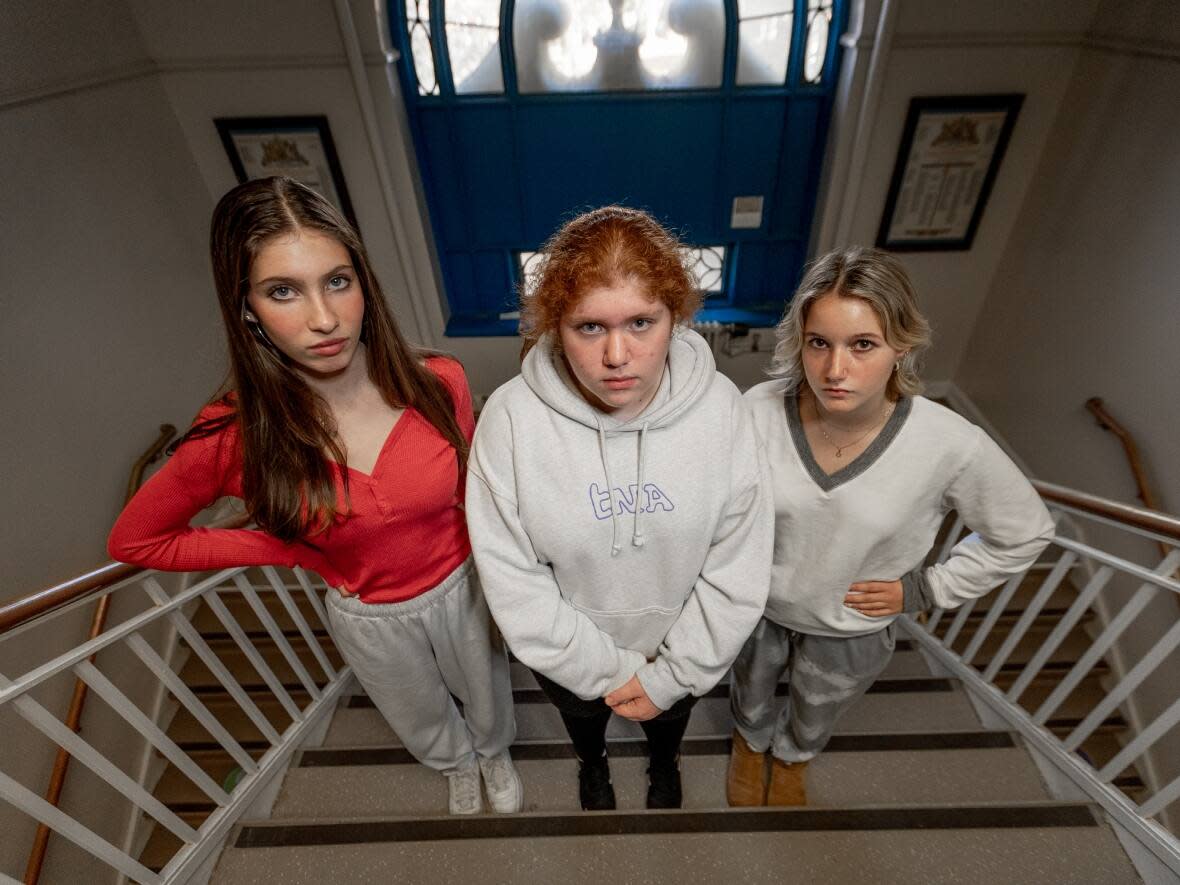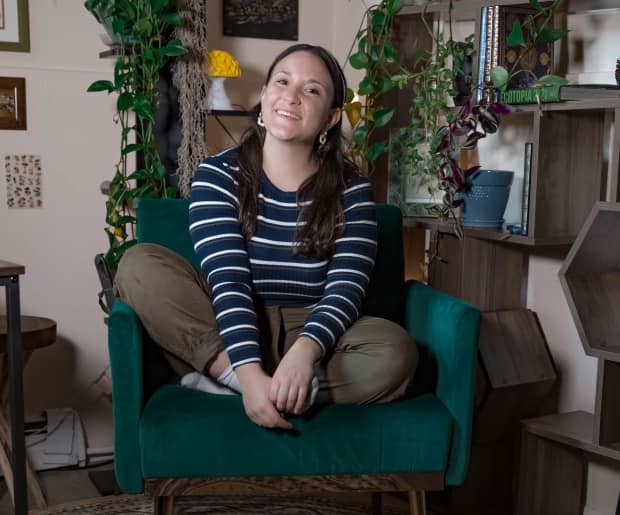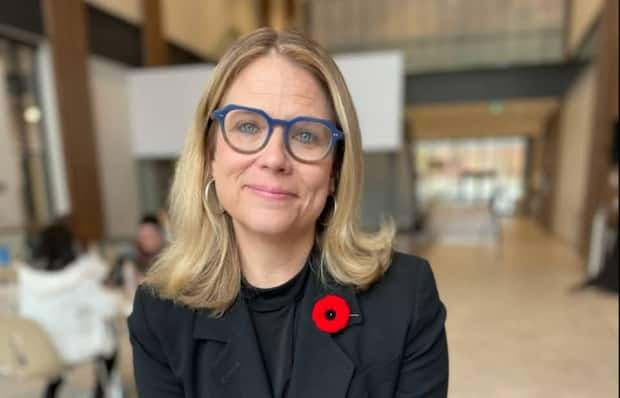Antisemitic conspiracies are rampant online. Students, experts share how to combat them

Toronto high schooler Jacqueline Snidman-Stren is no stranger to experiencing antisemitism, from people invoking Hitler and drawing swastikas to taunt the Jewish student — "they think it's funny" — to scrolling through social feeds and seeing comments and videos spouting conspiracy theories about Jewish people.
"I've seen on social media that Jewish people committed 9/11. That Jewish people run social media. Run the government. Control the weather. I've seen a bunch of crazy conspiracy theories that are completely not true," said the Grade 12 student, whose social accounts include Instagram, Snapchat, TikTok, Twitter and Pinterest.
"These people don't even know what they're talking about, but they decide to say it anyway because they see it on other platforms."
While public school students usually get some Holocaust education, it isn't enough to counter the antisemitic messages young people see and share online, whether intentionally or through ignorance, she said.
"We don't learn about the Holocaust in a curriculum until Grade 10 history and even then we don't learn a lot."
As events marking Holocaust Education Week get underway, CBC News talked to students and experts about antisemitism facing young people in online spaces today, and the need for better education to help navigate harmful and pervasive misinformation in these social spheres.
WATCH | Teens, experts on facing antisemitic videos, comments on social media:
What's behind it now?
In times of worldwide anxiety and worry, people often search for someone to blame, says Dara Solomon, executive director of the Toronto Holocaust Museum, which opens in spring 2023.
"We've seen a really unfortunate rise of hate in all of all kinds since COVID began really and we're seeing a real unfortunate rise in antisemitism specifically. A lot of this is online and this is where our kids are," she said.
Misinformation researcher Abbie Richards agrees, saying that amid significant social, political and economic unrest, some just find it easier to scapegoat a specific group.
"It's a way to channel anger and rage and a sense of injustice…. You don't actually have to fix a broken system. All you have to do is persecute this group," explained Richards, an American TikToker whose area of study includes investigating conspiracy theories spreading via the now-ubiquitous social platform.
Where do kids see this content?
According to Richards, toxic antisemitism and hate can be prominent on alternative social media platforms, because they're either less or completely unmoderated. Yet even on moderated mainstream platforms, "you're still seeing it," she said.
"Wherever people who hold antisemitic beliefs go in digital spaces, they carry that antisemitism with them."
While specific topics may be more frequently targeted with antisemitic commentary (a video discussing Israel and Palestine, for instance), it also turns up in unexpected places. Last year, Richards explored a seemingly "fun conspiracy theory about Antarctica" going viral. Some digging uncovered neo-Nazi mythology.
WATCH |Top social media platforms must do more to combat antisemitism, says MP:
Videos younger kids are watching online should also be on adults' radar, added high school senior Snidman-Stren.
"A video can go from Peppa Pig to Peppa Pig with a swastika and a Nazi outfit on — in a matter of seconds — because people think it's a funny joke. And the [video's] title may be normal, but then it turns into something like that."
With social media such a big part of most people's lives today, it's that much easier for disturbing content and misinformation to spread, noted her schoolmate Maya Klimitz.
"It doesn't matter how much education you have or how much you actually know about the topic…. [Social media] gives people the ability to share their information with millions of people," said the Grade 10 student in Toronto.
Classmate Eve Pascoe, also in Grade 10, believes there's intention behind the antisemitic material she's seen shared.
"These accounts are like people who don't reveal themselves. They don't have names. They don't have any videos of themselves, so I think they know what they're doing is bad."
Swift action needed
Museum director Solomon worries that this kind of content proliferating on social media normalizes antisemitism to young people.
"Kids see it. They don't necessarily know what it is and they just know that it's forbidden content. So then it's attractive to them and they start using it in graffiti and that sort of thing," she said.
"Part of our work is letting [students] know that these symbols are actually tied to history and they have to understand that just putting them up on a school and … scratching one on the board is not OK."
Repeated exposure has a real effect, according to Richards.
"The more you see something, the more it appears to be true. And the more you see something extremist or radical, the less it's going to seem extremist or radical."
Strategies for parents and educators
Richards recommends adults first establish an atmosphere where kids feel safe sharing what they see online, before talking with them on a regular basis about they're scrolling through.

"They need to be aware that this exists in the digital spaces that they're going to be navigating," she said.
"Making sure that we are checking in with kids ... about what they're seeing and how those narratives could potentially cause real-world harm are discussions that we should be constantly having…. Not just now, not just this week, but all the time."
Age-appropriate education resources can help counter online misinformation about Jewish people and about the Holocaust, according to Solomon, who says "education is the most important tool, not just for our children but for adults and parents as well."
She pointed to Neuberger Holocaust Education Centre's resources that share Holocaust history from multiple perspectives and through the testimony of survivors, whether visiting classrooms or screened online. For parents and educators of middle-schoolers, a new program of short animated videos based on real-life incidents involving students aims to teach about the impact of antisemitism.

If students are unfamiliar with the Jewish community, Solomon added, adults should not just rush in and start with the Holocaust.
"Introduce Jewish heritage and culture and traditions and local history, rather than doing a deep dive into antisemitism in the Holocaust [first]… Start with the culture like you would with any other group."
Rather than trying to turn back time to some pre-internet, pre-social media age, "we must dig into 'Why do people feel powerless and out of control and then turn to conspiracy theories in the first place?'" said Richards.
"It's going to require a lot of social empowerment, a lot of education to get through this and to shift our discourse. But that's not to say that it's impossible."


